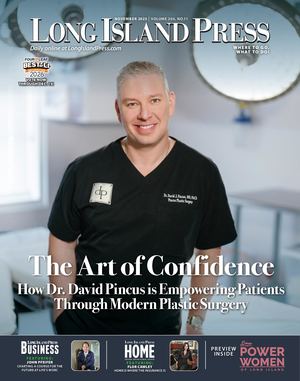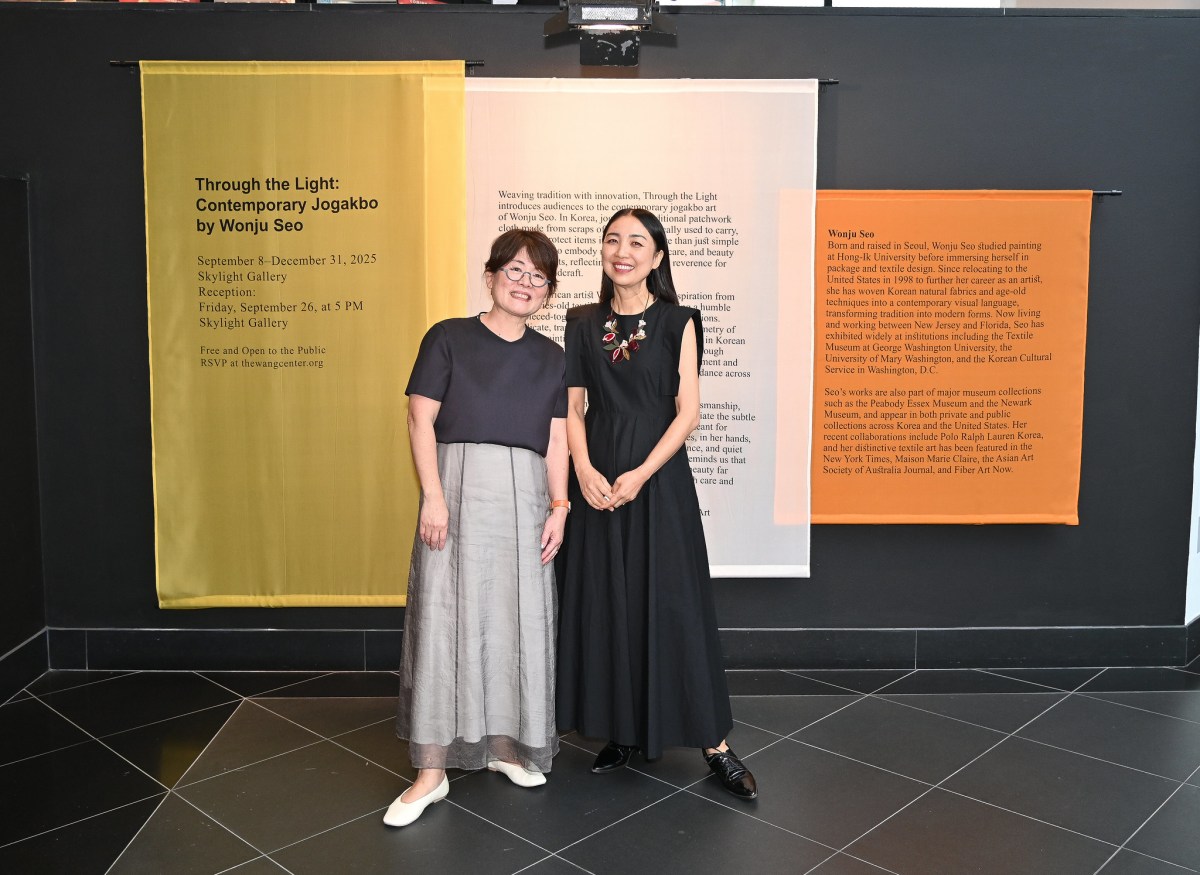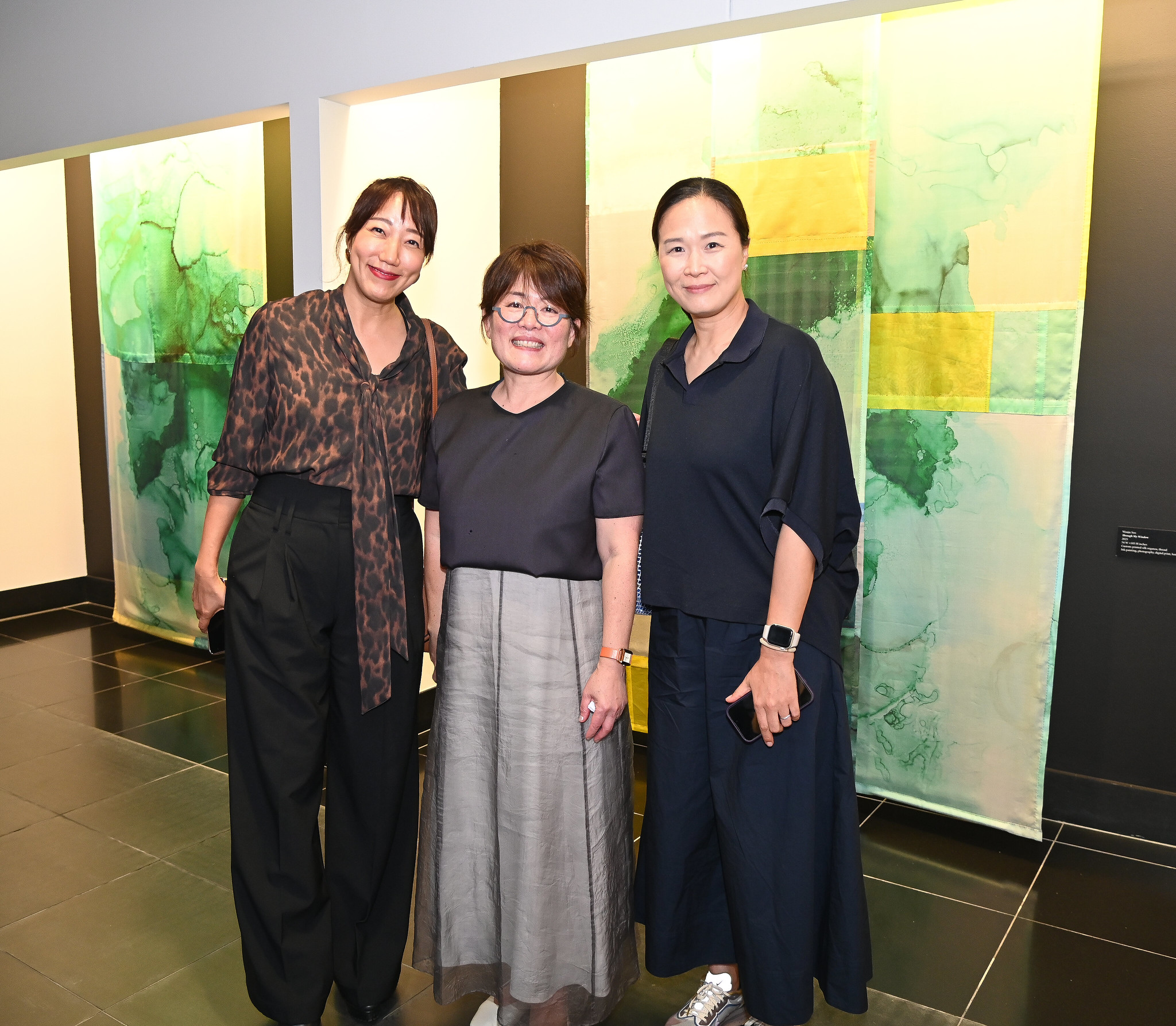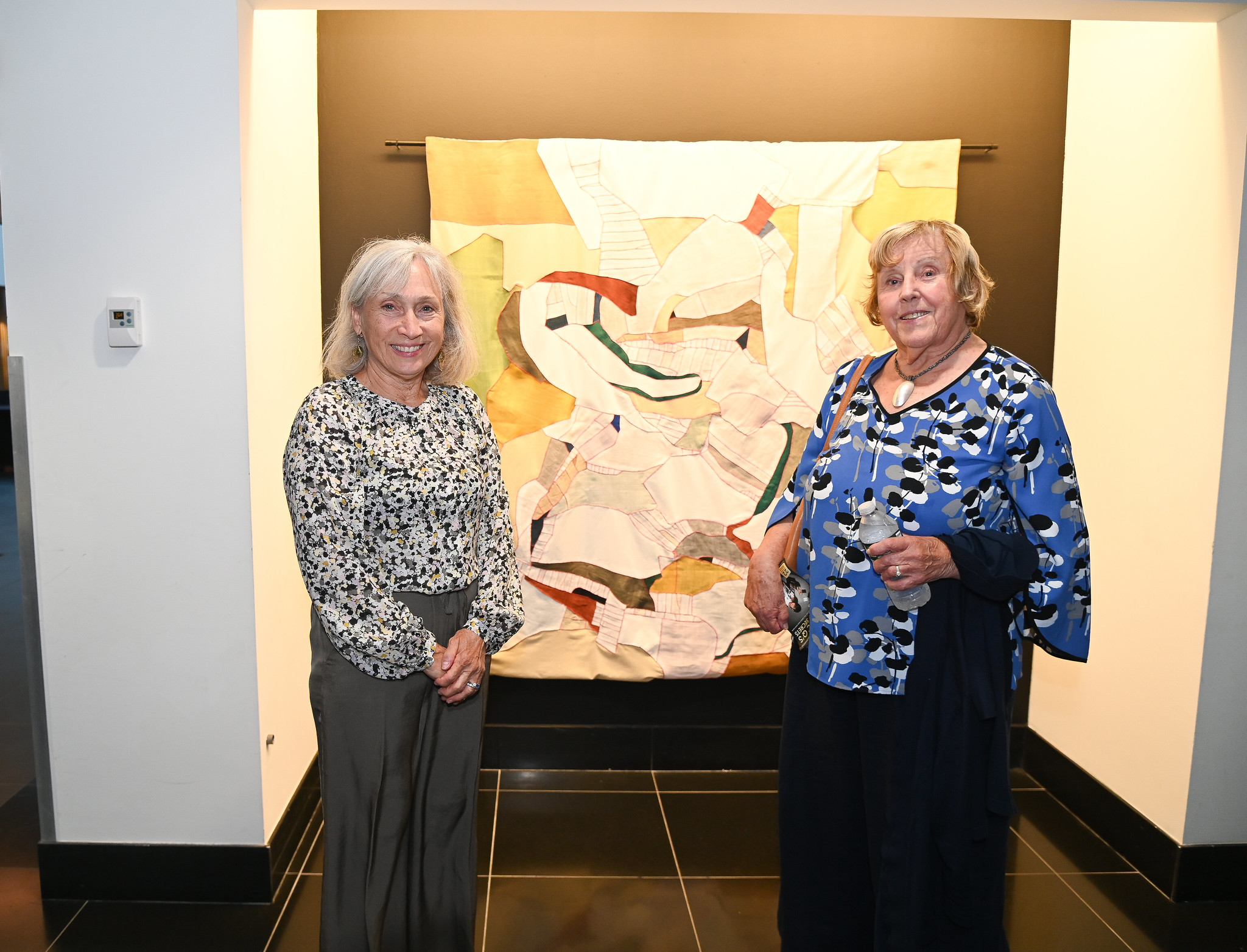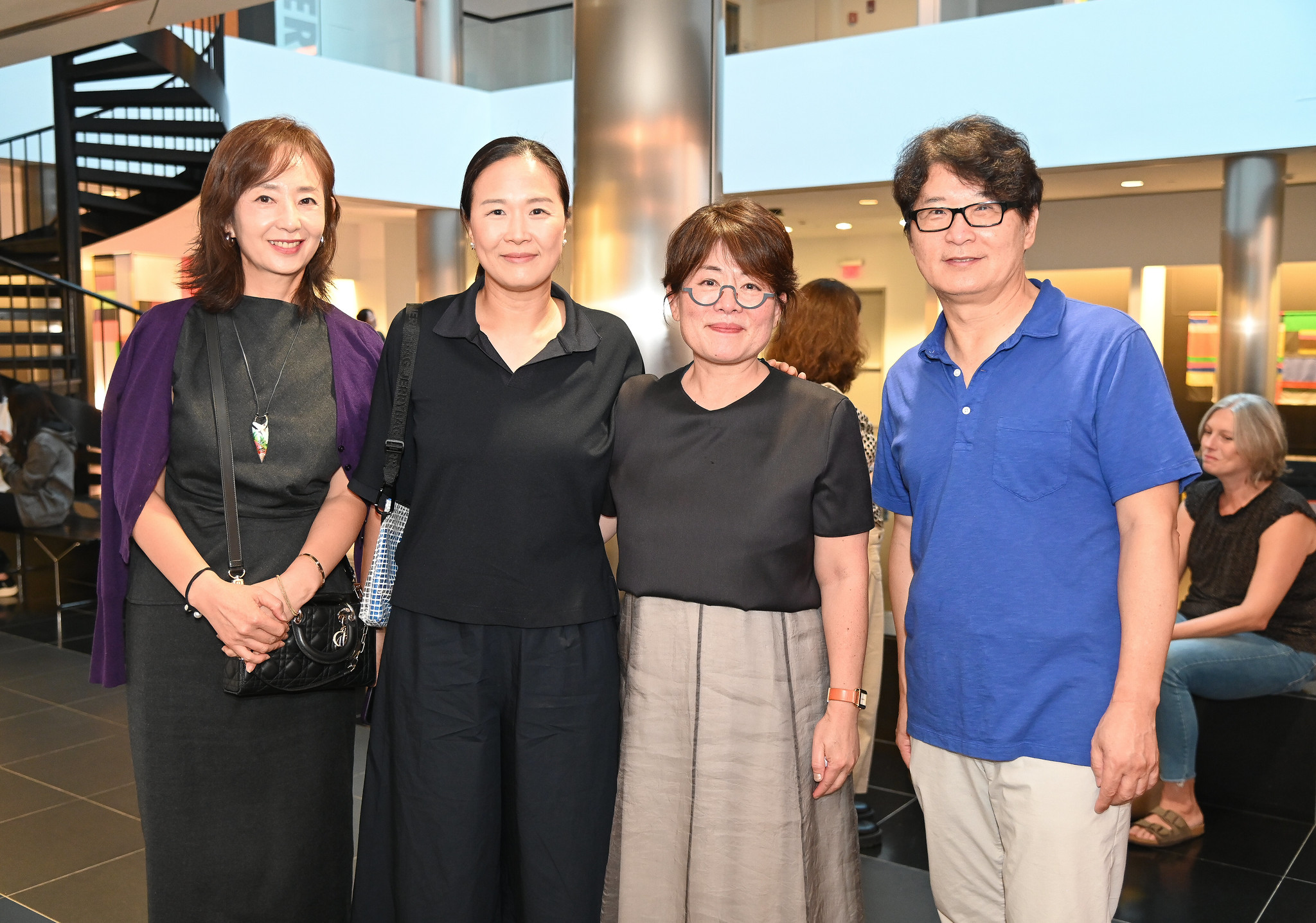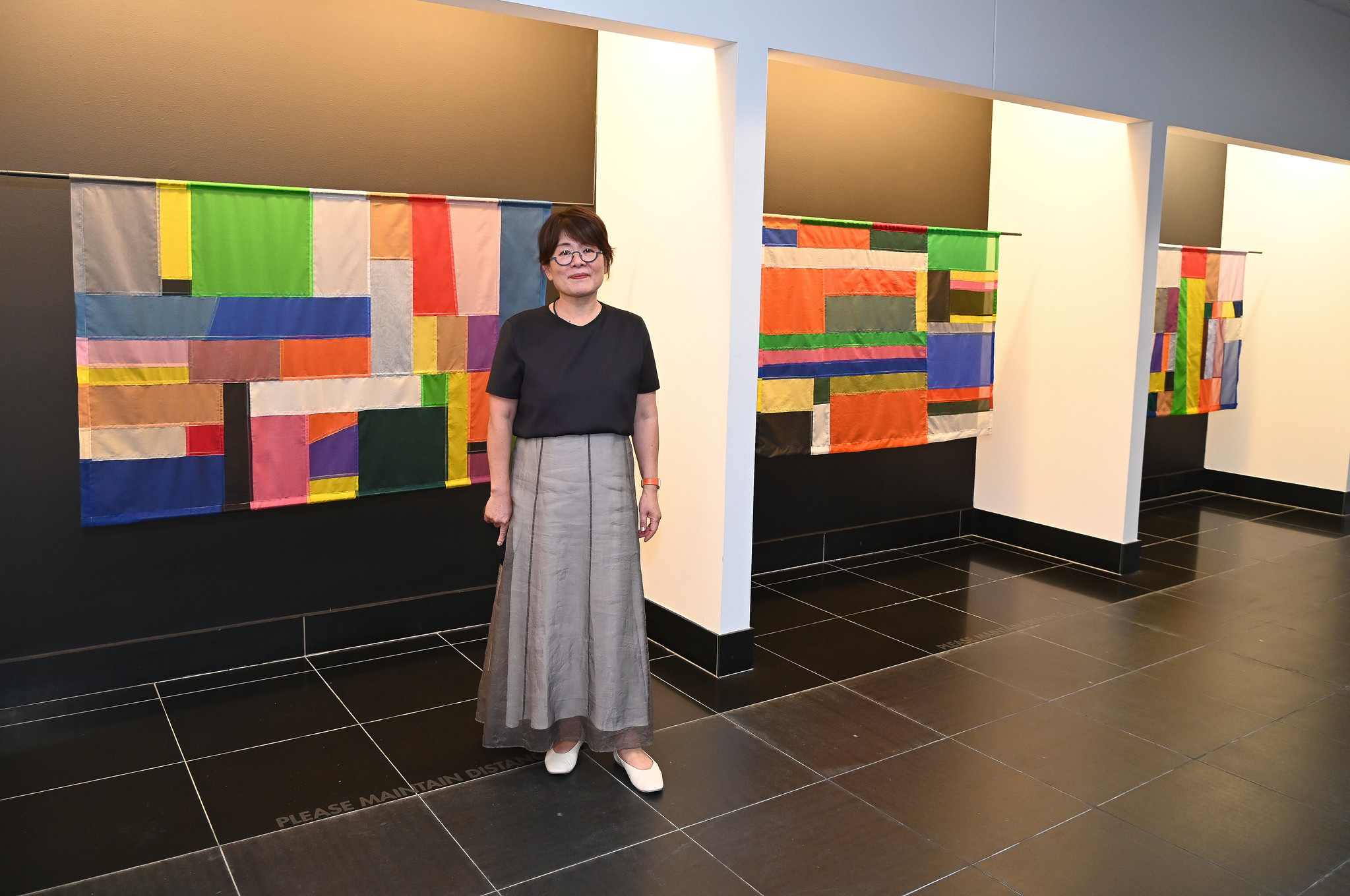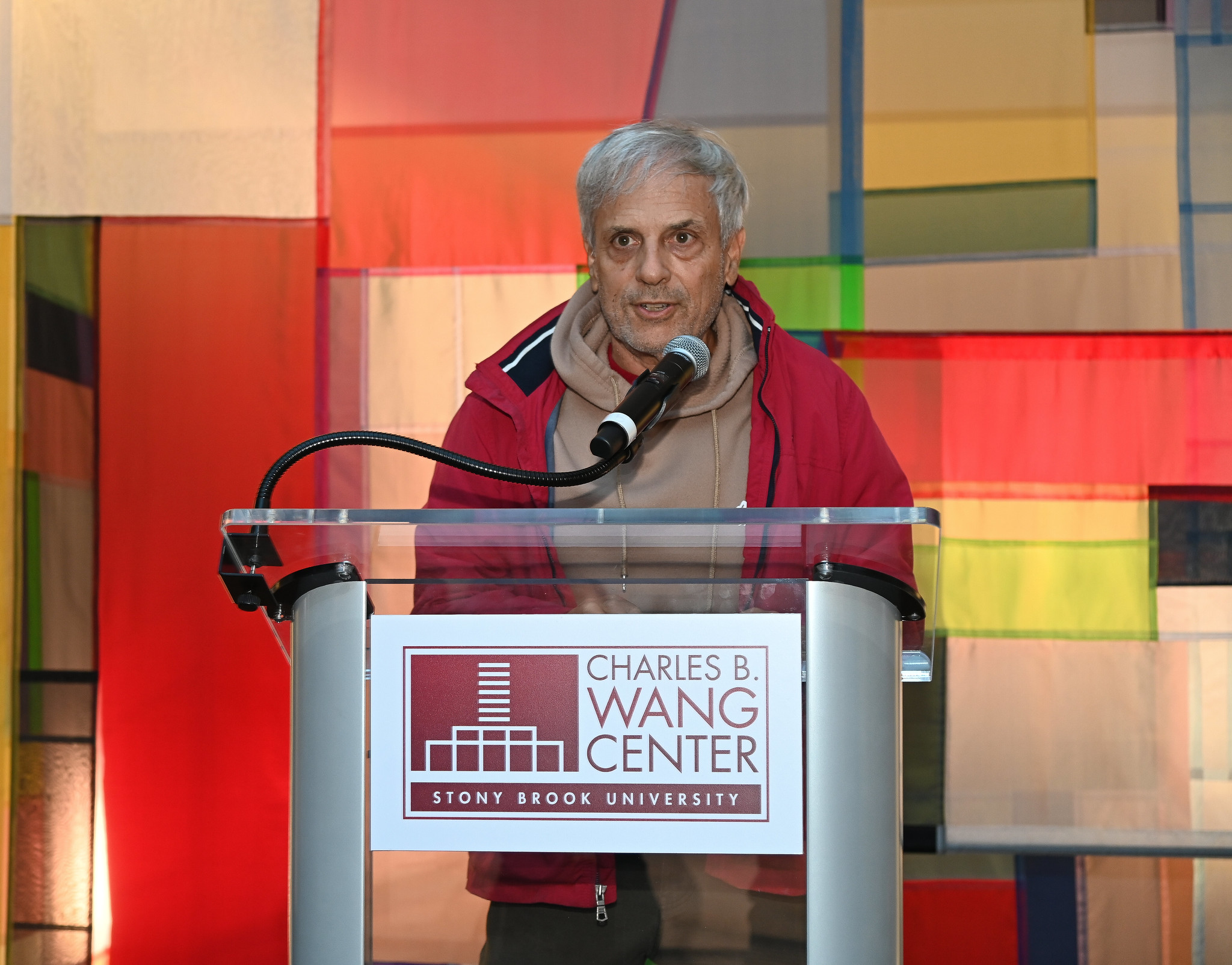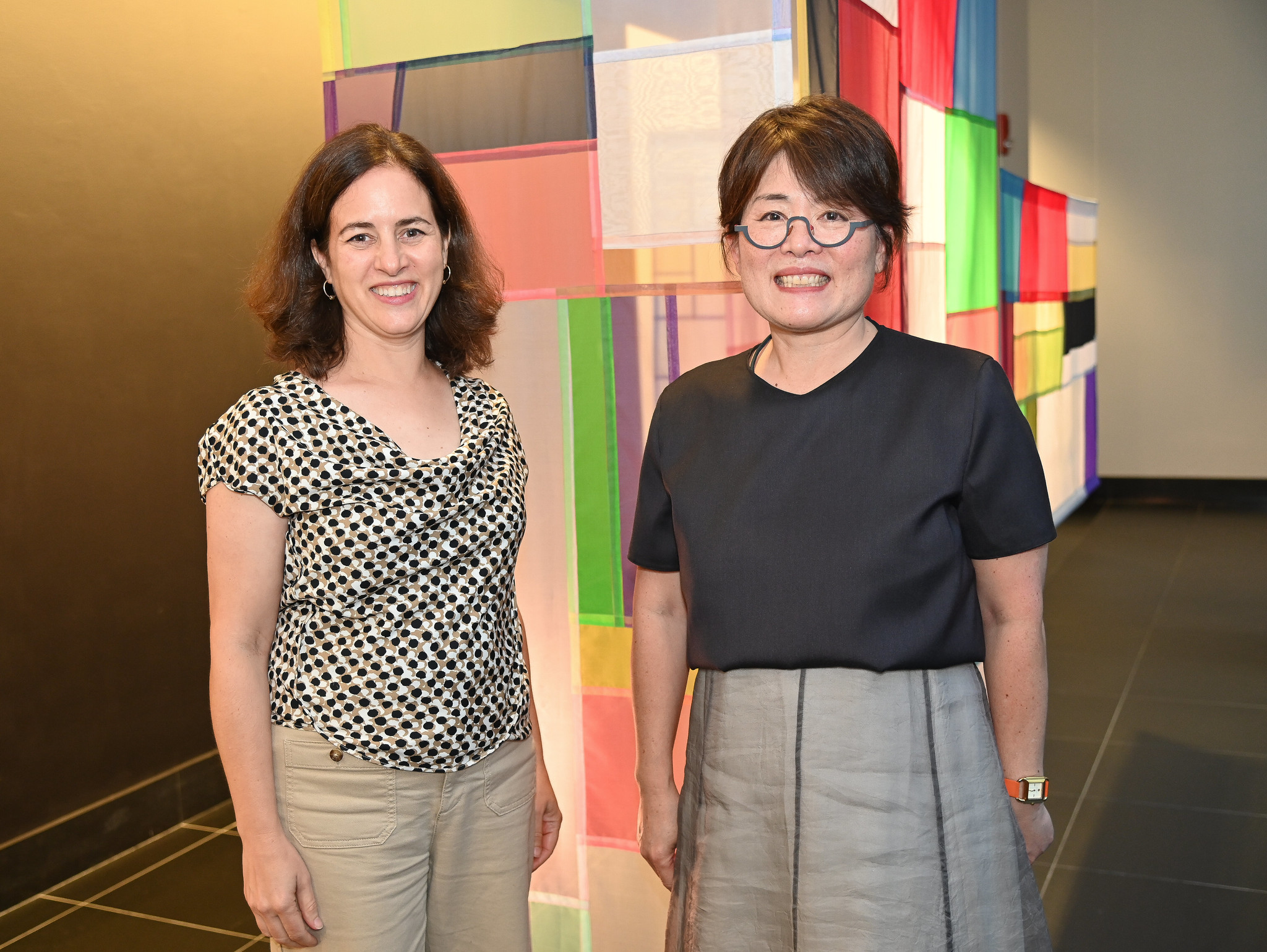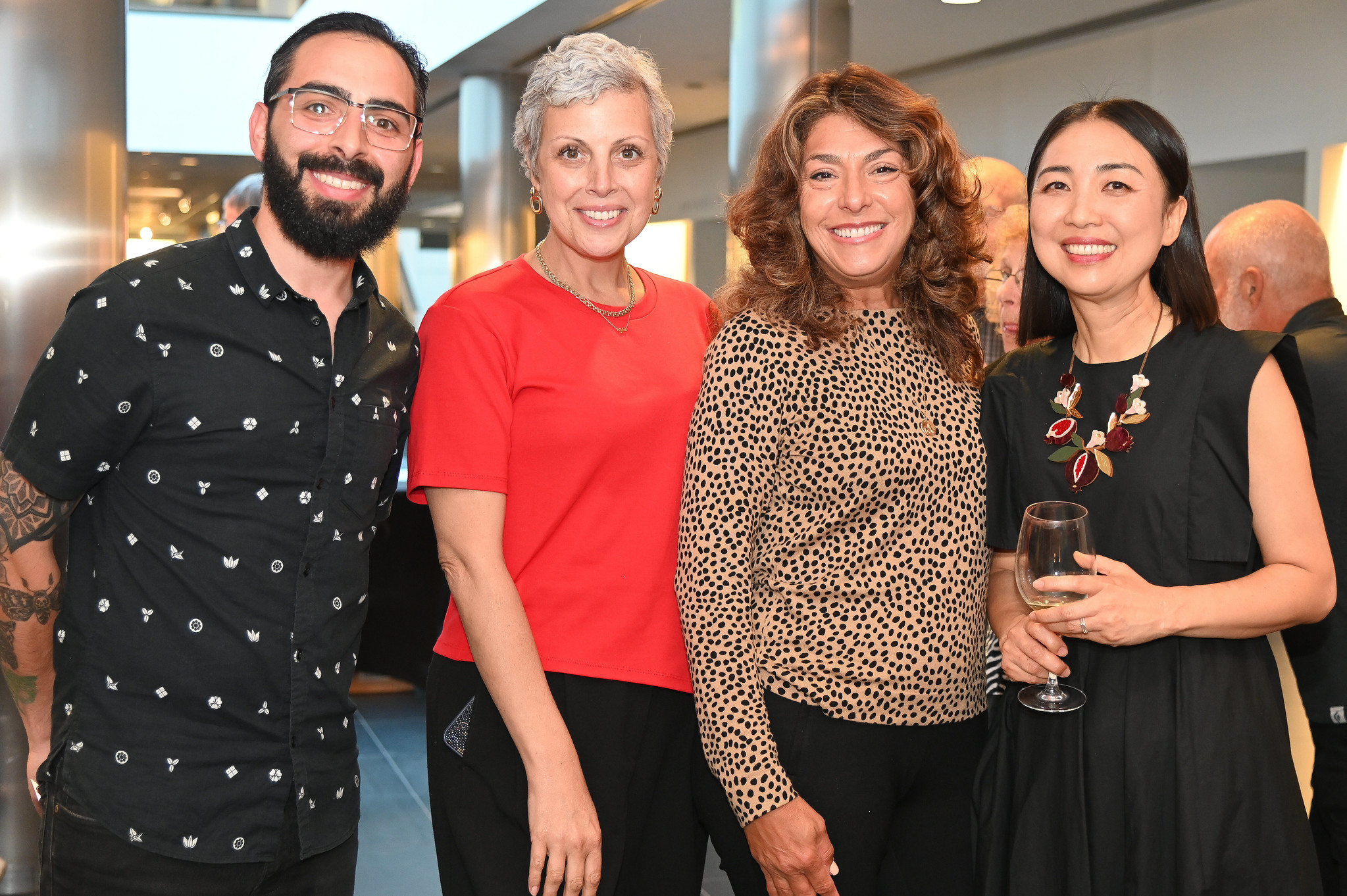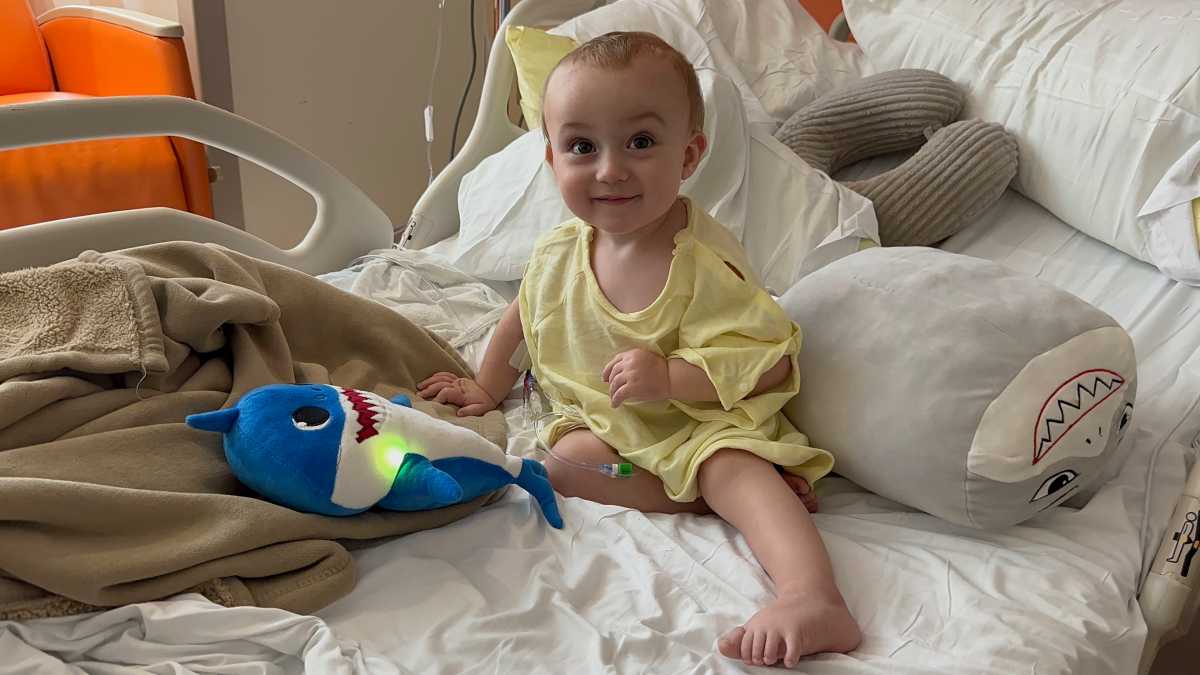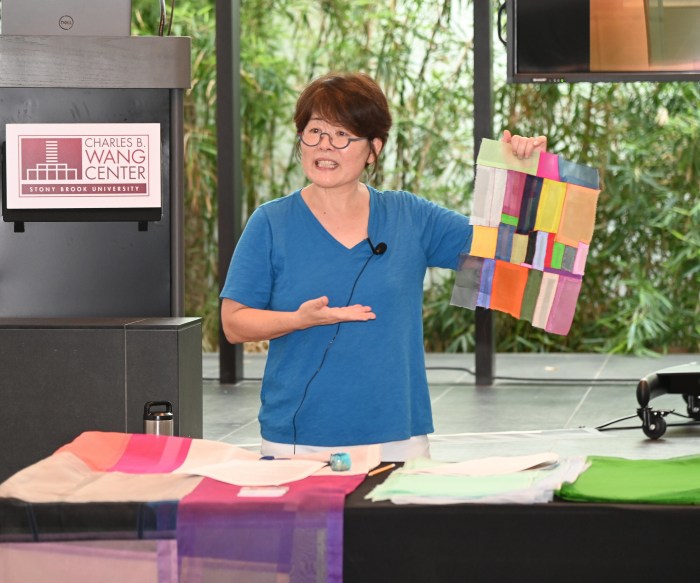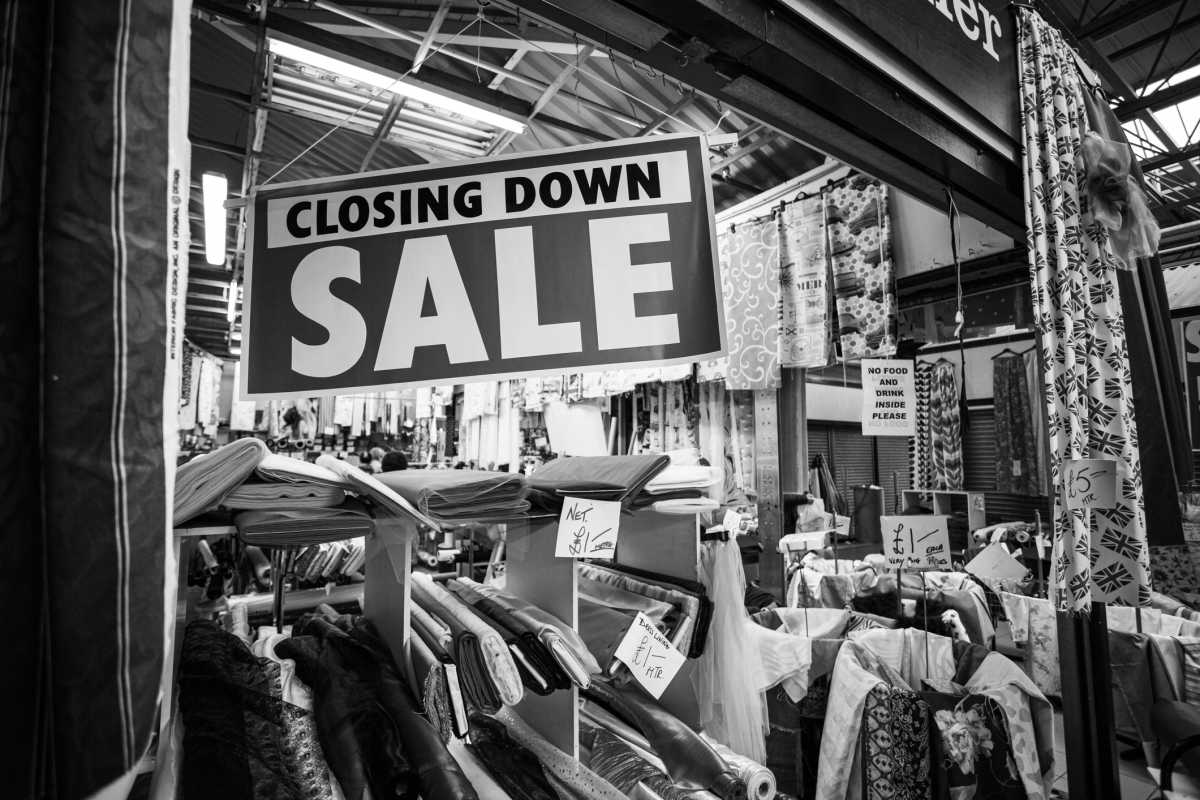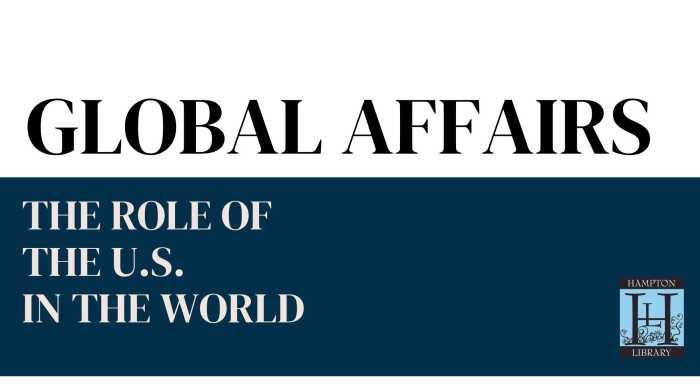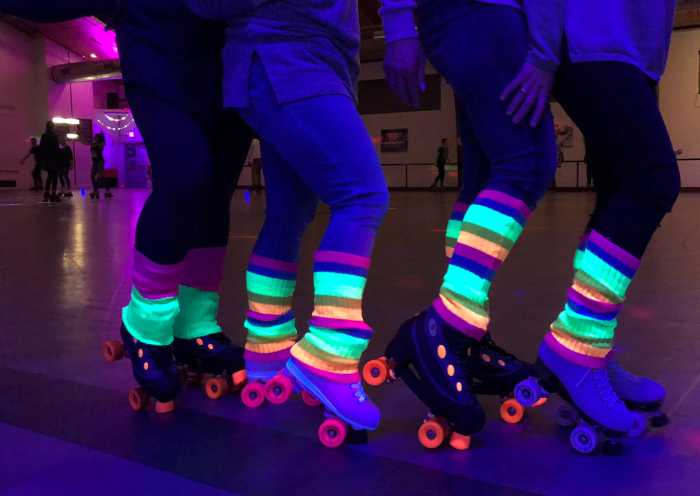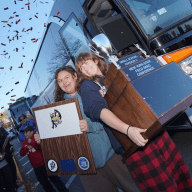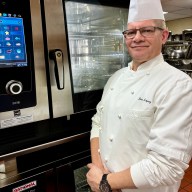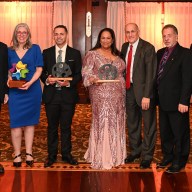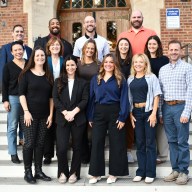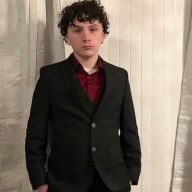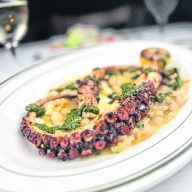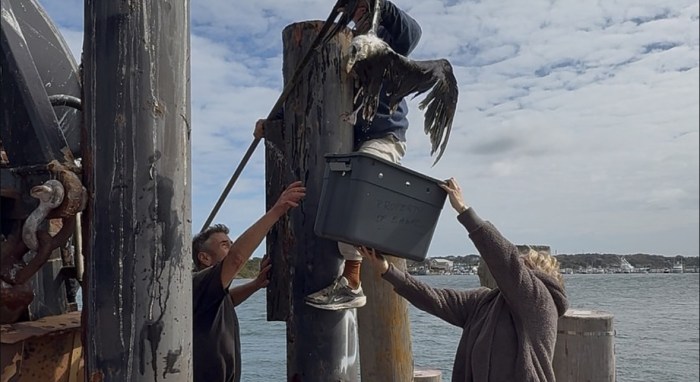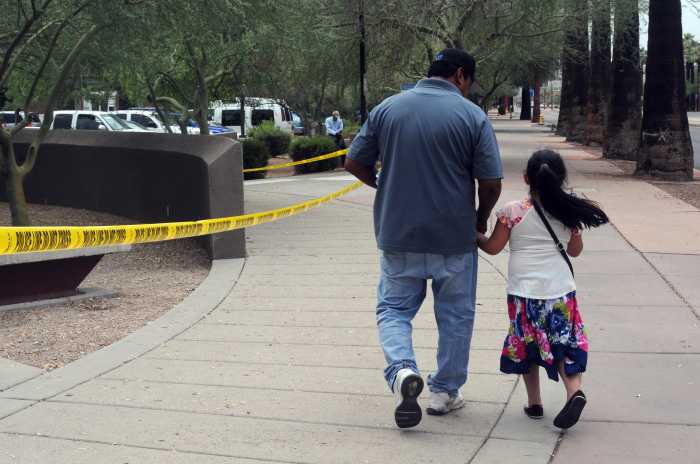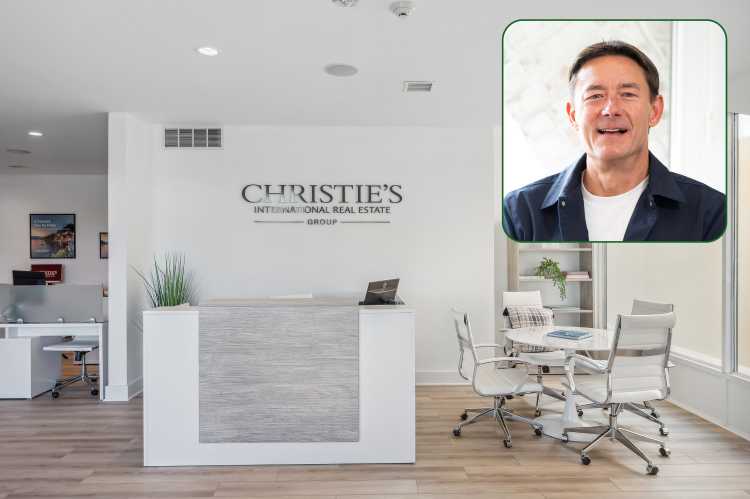The Charles B. Wang Center welcomed a full house for the opening of its fall exhibition, Through the Light: Contemporary Jogakbo by Wonju Seo. The exhibition explores the luminous possibilities of Korean patchwork (jogakbo) in a contemporary idiom, transforming the Wang Center’s galleries into a serene, radiant field of stitched transparencies — panels of organza, silk, and ramie that capture and release light with every movement of the viewer.
Curated by Dr. Jinyoung Anna Jin, Director of Asian Art and Culture at the Wang Center, the exhibition centers on Seo’s celebrated fabric works and site-specific installations, inviting viewers to read fabric and thread as one might read ink—for rhythm, pause, and breath.
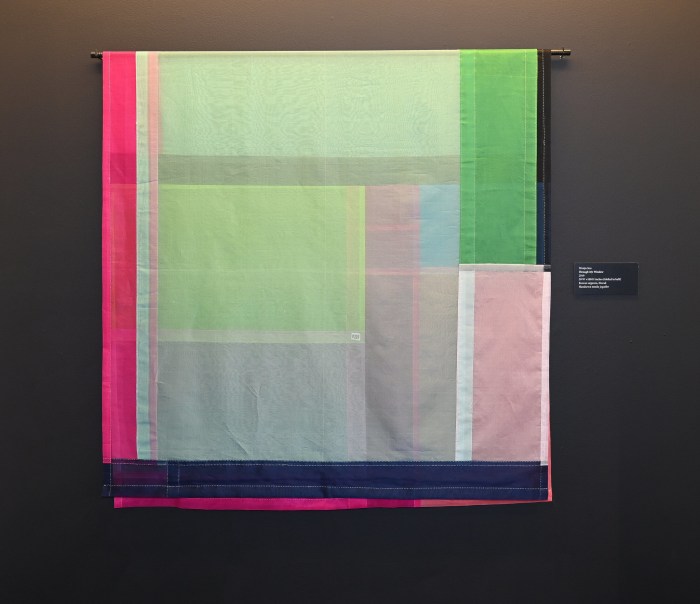
“Wonju Seo’s work reveals how deeply she values both tradition and innovation — honoring the Korean practice of patchwork while pushing it into bold, contemporary directions,” Jin remarked at the reception. “She has always believed that making with our own hands is a way of connecting — with ourselves, with one another, and with the generations who came before us.”
At the heart of the exhibition is a renewed encounter with White Wonderland (2015), an installation that has been a beloved presence at the Wang Center since 2015. As one of the Center’s most cherished permanent works, it has long captured the imagination of visitors. Now, reintroduced in harmony with Seo’s recent creations, it reveals both continuity and transformation, showing how her vision has deepened and evolved over the past decade.
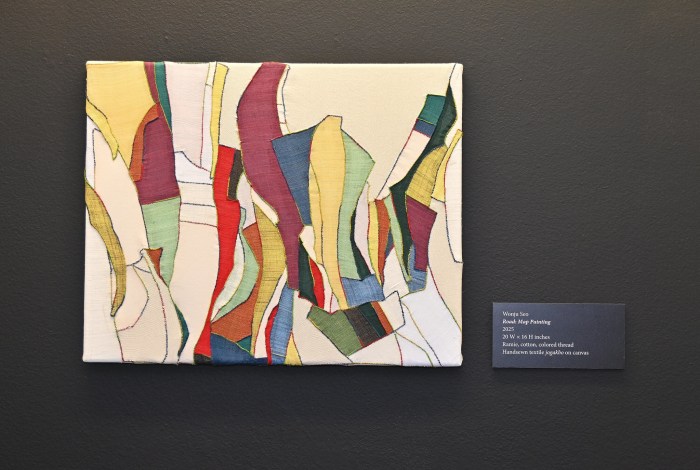
Seo’s work reflects not only her artistic journey but also her personal path from Korea to the United States, interwoven with memories of her childhood. “I’m always thinking about how fabric holds time,” she said. “When you stitch, you’re not just joining materials — you’re joining moments. Each overlap gathers light differently, like distinct memories living together.”
Beyond its visual calm, Through the Light argues for the cultural and ecological intelligence of jogakbo. Historically, patchwork emerged from necessity and thrift, but its logics — repair, recomposition, zero waste — resonate pointedly now.
The exhibition also extends into public programming. On Sept. 27, Seo led a hands-on workshop where participants practiced basic jogakbo techniques and reflected on how reuse can serve as both an aesthetic method and an ethical stance.
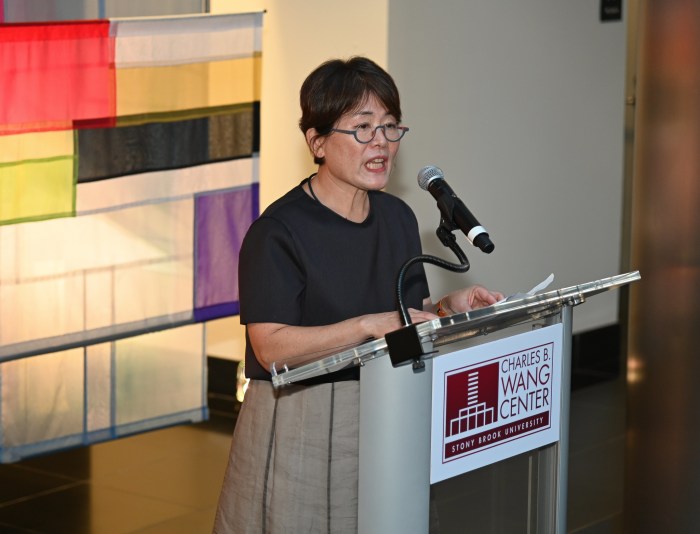
In addition, a shadow puppet performance inspired by jogakbo will be presented on Sunday, Nov. 9 at 1 p.m. and 3 p.m. Titled Wrapped Presence, the program features puppeteers Caroline Borderies and Christian Barthod, with music and sound by Andre Bregegere and narration by Tessa Souter.
The performance unfolds through spare, intricate illustrations and shifting lighting palettes, moving from stark black and white to a burst of riotous color. Dr. Jin created these programs as an integral part of the Wang Center’s mission. “We want visitors to carry something tangible out of the gallery — not only an image, but a skill, a mindset, a way of paying attention,” she noted.
Through the Light: Contemporary Jogakbo by Wonju Seo is on view through Dec. 31 at the Charles B. Wang Center, Stony Brook University.
Gallery hours, workshop details, and admission information are available at thewangcenter.org.
